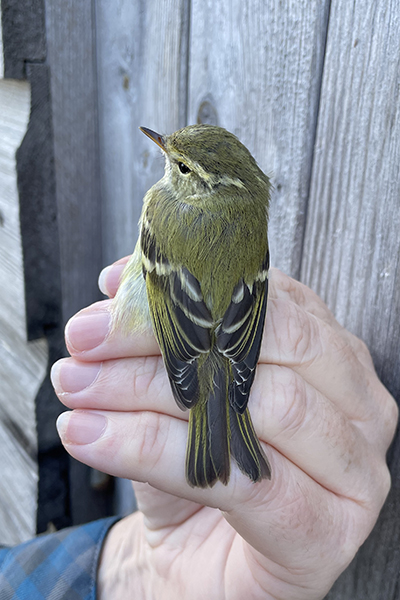There have been few seawatching opportunities off Hilbre for me over the last few years. A combination of Covid and the wrong weather conditions, or the right conditions at the wrong time, meant its probably three years since I've see na Leach's Petrel from the island!
Weather conditions were good a week or so ago with several Leach's being seen but again, the timings were wrong with physio and hospital appointments being booked the same days. Conditions looked like they'd be good for Saturday and Sunday and I agreed to meet up with Alan around 11 am to spend the afternoon tide on the island. However, weather conditions changed and by Sunday there was only a force 3-4 wind forecast. Barely enough to dry the laundry!
We decided to go anyway as it looked like it was going to be a lovely day. Steve decided he'd go slightly earlier as he had to come off before the tide so we arranged to meet him there.
Arriving on Hilbre the first bird we saw was a Stonechat that Alan spotted before we'd even got out of the car! Steve had got the kettle on and had waited for us to arrive before doing a round of the island and the heligoland traps.
Fuelled by a mug of tea we headed off for the first round of the day. There seemed to be a few more Robins and Blackbirds around than of late but no warblers. The sea was very quiet with only the regular gulls and cormorants visible on the water. Definitely not a day for seawatching! It was nice to see a few freshly moulted Shelducks flying over as they headed further down the Dee to feed on the exposed mud.It had a fat score of 10 suggesting it hadn't moved far which makes sense as birds either arrive in the east coast and filter west or arrive in the northern isles and filter south. It could have easily been on the island for a couple of days as it was quiet and we only heard it call three times during the time we were on the island. The wing length fell between the range for male and female so it was left unsexed although form the brightness of the plumage it could have been a male.
One thing that was very obvious in the hand but can't often be seen as well in the field, was the weak central crown stripe. A beautiful little bird and one I'd been long waiting to ring on Hilbre.




































































No comments :
Post a Comment